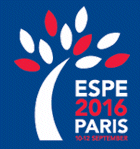
55th Annual ESPE (ESPE 2016)
Paris,
France
10 Sept 2016 - 12 Sept 2016
Paris, France: 10-12 September 2016 Further information



